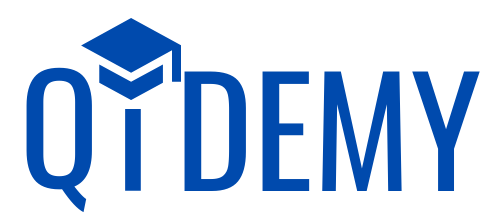Total Quality Management (TQM) is an organizational approach that seeks to continuously improve the quality of products and services through the involvement of all employees and the implementation of a set of quality management processes.
TQM is particularly important in today’s business environment as it allows organizations to stay competitive by providing high-quality products and services that meet or exceed customer expectations.
With the rise of globalization and increased competition, TQM can help organizations to improve their efficiency, reduce costs, and increase customer satisfaction, which are all essential for long-term success.
Additionally, TQM also helps organizations to foster a culture of continuous improvement, which is important in today’s rapidly changing business landscape. Furthermore, TQM helps organizations to comply with industry standards, regulations and certifications which is crucial for those organizations operating in regulated industries.
Table of Contents
Benefits of TQM
A. Increased customer satisfaction
TQM focuses on understanding and meeting customer needs, which leads to increased customer satisfaction. This can result in repeat business, positive word-of-mouth, and a stronger overall reputation for the organization.
Total Quality Management (TQM) improves customer satisfaction by focusing on meeting or exceeding customer needs and expectations through the involvement of all employees and the implementation of a set of quality management processes.
One of the key principles of TQM is customer-centricity, which means that the organization focuses on understanding and meeting the needs and expectations of its customers. TQM helps organizations to identify customer needs through various means such as customer feedback, surveys, and market research, and then use that information to improve products and services.
TQM also emphasizes the importance of continuous improvement, which helps organizations to identify and address any issues that may be impacting customer satisfaction. This can include issues such as product defects, delivery delays, or poor customer service. By continuously monitoring and improving processes, TQM helps organizations to identify and resolve any issues that may be impacting customer satisfaction.
Additionally, TQM encourages employee involvement and empowerment. By providing employees with the tools and training they need to improve quality, and by recognizing and rewarding their efforts, TQM helps to create a culture of quality within the organization. This culture of quality helps employees to identify and address issues that may be impacting customer satisfaction, and also to come up with new ideas to improve the customer experience.
Overall, TQM helps organizations to understand and meet customer needs and expectations, continuously improve products and services, and create a culture of quality within the organization that leads to increased customer satisfaction.

B. Improved efficiency and productivity
TQM emphasizes the use of data-driven processes and continuous improvement, which can help organizations to identify and eliminate inefficiencies and improve overall productivity.
Total Quality Management (TQM) improves efficiency and productivity by implementing a set of quality management processes and principles that focus on continuous improvement, employee involvement, and the elimination of waste.
One of the key principles of TQM is continuous improvement, which encourages organizations to continuously monitor and improve their processes and systems. This can lead to improvements in efficiency and productivity by identifying and eliminating waste, such as excess inventory, long lead times, or unnecessary steps in a process.
TQM also emphasizes the importance of employee involvement and empowerment. By involving employees in the quality improvement process, TQM helps to create a culture of quality within the organization. This culture of quality helps employees to identify and address issues that may be impacting efficiency and productivity, and also to come up with new ideas to improve the process.
Additionally, TQM promotes the use of data and metrics to measure performance, this allows organizations to identify areas where improvements can be made and track the progress over time. By measuring and analyzing performance data, TQM helps organizations to identify bottlenecks, inefficiencies, and other issues that may be impacting productivity.
Furthermore, TQM encourages the use of standardized process and procedures, this can help organizations to reduce variability and inconsistency in their processes, which can improve efficiency and productivity.
C. Enhanced employee engagement and empowerment
TQM encourages employee involvement in the decision-making process, which can lead to increased employee engagement and empowerment. This can result in higher job satisfaction and a more motivated workforce.
Total Quality Management (TQM) enhances employee engagement and empowerment by involving employees in the quality improvement process and providing them with the tools and training they need to improve quality.
TQM emphasizes the importance of employee involvement and empowerment by encouraging the participation of employees at all levels in the quality improvement process. This can include involving employees in problem-solving and decision-making, as well as giving them the authority to make changes to improve processes and systems. By involving employees in the quality improvement process, TQM helps to create a sense of ownership and commitment among employees, which can lead to increased engagement and motivation.
Additionally, TQM provides employees with the tools and training they need to improve quality. This can include training on quality management techniques, such as Six Sigma and Lean, as well as providing employees with the necessary tools and equipment to carry out their work effectively. By providing employees with the necessary tools and training, TQM helps to increase their skills and confidence, which can lead to increased engagement and empowerment.
Furthermore, TQM encourages the use of teamwork and collaboration, which can help to create a sense of cohesion and community among employees. This can lead to increased engagement and motivation, as employees feel that they are working together towards a common goal.
D. Reduced costs and increased profitability
Total Quality Management (TQM) can increase profitability and reduce costs by improving efficiency and productivity, reducing waste and defects, and increasing customer satisfaction.
One of the key principles of TQM is continuous improvement, which encourages organizations to continuously monitor and improve their processes and systems. By identifying and eliminating waste, such as excess inventory, long lead times, or unnecessary steps in a process, TQM can help to improve efficiency and productivity, which can lead to cost savings.
TQM also emphasizes the importance of reducing defects and improving product quality. By implementing quality control processes and techniques, such as Six Sigma and Lean, TQM can help organizations to identify and eliminate the root causes of defects, which can lead to cost savings by reducing the need for rework, scrap, and warranty claims.
Additionally, TQM can increase profitability by improving customer satisfaction. By involving customers in the quality improvement process, TQM helps organizations to understand and meet customer needs, which can lead to increased customer loyalty and repeat business. Additionally, by reducing defects and improving product quality, TQM can help organizations to improve their reputation and brand image, which can lead to increased sales and profitability.
Furthermore, TQM helps organizations to measure and analyze performance data, which allows them to identify areas where improvements can be made and track progress over time. By measuring and analyzing performance data, TQM can help organizations to identify areas where cost savings can be made, such as reducing lead times, improving inventory management, or reducing energy consumption.

E. Improved communication and collaboration
TQM promotes open communication and collaboration among all employees, which can lead to better problem-solving and decision-making.
Total Quality Management (TQM) improves communication and collaboration by encouraging the participation of employees at all levels in the quality improvement process, promoting teamwork and involving customers in the process of quality management.
One of the key principles of TQM is employee involvement, which encourages the participation of employees at all levels in the quality improvement process. By involving employees in problem-solving and decision-making, TQM helps to create a sense of ownership and commitment among employees, which can lead to improved communication and collaboration. Additionally, TQM often involves cross-functional teams, which can help to break down silos and improve communication and collaboration across different departments and functions.
TQM also emphasizes the importance of teamwork, which can help to create a sense of cohesion and community among employees. This can lead to increased communication and collaboration, as employees feel that they are working together towards a common goal.
Additionally, TQM involves involving customers in the process of quality management. By understanding and meeting customer needs, TQM can help organizations to improve communication and collaboration with customers, which can lead to increased customer satisfaction and loyalty.
Furthermore, TQM often includes regular meetings and reviews to track progress and discuss issues, which can help to improve communication and collaboration among team members.
F. Greater flexibility and adaptability
TQM emphasizes the need for organizations to be flexible and adaptable in order to meet changing customer needs and market conditions. This can help organizations to respond more quickly and effectively to changes in the business environment.
TQM encourages organizations to continuously monitor and improve their processes and systems. By encouraging experimentation and testing new ideas, TQM can help organizations to identify new and better ways of doing things, which can lead to increased flexibility and adaptability.
TQM also emphasizes the importance of learning and continuous improvement, which can help organizations to quickly adapt to changing market conditions, customer needs, and new technologies. By creating a culture of learning, TQM can help organizations to continuously improve their processes and systems, which can lead to increased flexibility and adaptability.
TQM often involves cross-functional teams, which can help to break down silos and improve communication and collaboration across different departments and functions. This can lead to increased flexibility and adaptability, as different departments and functions can more easily share knowledge, skills, and resources.
TQM encourages organizations to involve customers in the process of quality management, which can help organizations to better understand and meet customer needs, which can lead to increased flexibility and adaptability, as organizations can quickly respond to changing customer needs.
TQM helps in flexibility and adaptability by promoting continuous improvement, encouraging experimentation and creating a culture of learning, involving cross-functional teams, encouraging organizations to involve customers and continuously monitor and improve their processes and systems.
Implementing TQM
A. Establishing a TQM team and setting goals
To implement TQM, organizations should establish a dedicated TQM team that is responsible for developing and implementing quality management processes. This team should set clear and measurable goals for the organization to achieve.
B. Training employees and creating a culture of quality
Employee training is essential for the successful implementation of TQM. Employees should be trained on the principles of TQM, as well as on specific quality management processes and tools. Additionally, to create a culture of quality, organizations should encourage employee participation in quality improvement efforts and recognize and reward employees for their contributions.
C. Implementing continuous improvement processes
TQM is built on the principle of continuous improvement. Organizations should implement processes such as root cause analysis, process mapping, and statistical process control to identify areas for improvement and track progress over time.
D. Measuring and analyzing performance
Organizations should establish key performance indicators (KPIs) to measure the success of their TQM efforts and track progress over time. These KPIs should be regularly reviewed and analyzed to identify areas for improvement.
E. Making necessary adjustments and improvements
Based on the performance data, the organization should make necessary adjustments and improvements to their processes and practices to ensure that they continue to meet or exceed customer needs and expectations. Additionally, the organization should continuously monitor the performance and customer feedback to ensure the sustained success of TQM.
Case studies
One example of a company that successfully implemented TQM is Toyota Motor Corporation. Toyota implemented TQM in the 1950s and has since become a global leader in the automotive industry.
As a result of implementing TQM, Toyota has achieved significant improvements in efficiency and productivity, which has helped to reduce costs and increase profitability.
Additionally, the company has also seen improvements in customer satisfaction and employee engagement.
Toyota’s TQM efforts have also led to the development of the Toyota Production System, which is widely recognized as a leading example of lean manufacturing.
This system has been adopted by many other companies and industries worldwide as a means to achieve greater efficiency and productivity.
Furthermore, Toyota’s TQM approach has also been credited for their ability to quickly and efficiently respond to changes in the market and customer needs, which has contributed to the company’s long-term success.
Conclusion
Total Quality Management (TQM) is an organizational approach that seeks to continuously improve the quality of products and services through the involvement of all employees and the implementation of a set of quality management processes. There are innumerable benefits of TQM, including increased customer satisfaction, improved efficiency and productivity, enhanced employee engagement and empowerment, reduced costs, increased profitability, improved communication and collaboration, and greater flexibility and adaptability.
Companies that have not yet implemented TQM should consider doing so in order to stay competitive and meet the changing needs of customers in today’s business environment. TQM can help organizations to improve their efficiency, reduce costs, and increase customer satisfaction, which are all essential for long-term success.
TQM is an ongoing process that requires commitment and continuous improvement. As such, it will continue to be important in the future as organizations must continuously adapt and improve to stay competitive. The industry standards, regulations and certifications also continue to evolve, TQM will be more essential for organizations operating in regulated industries. Furthermore, as customers’ expectations continue to rise, the importance of TQM will also increase as it helps organizations to consistently meet or exceed customer needs and expectations.




